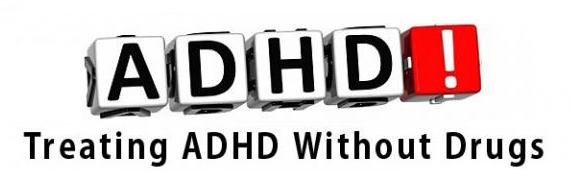Attention deficit hyperactivity disorder (ADHD) affects 3 to 5 percent of school-age children, causing symptoms such as inattentiveness, frenetic activity, anxiety and forgetfulness.
Kids with ADHD typically respond to drug prescriptions designed to provide calm and focus, but some of these can cause unpleasant side effects like appetite changes and muscle spasms. Experts suggest considering these natural options to complement an afflicted child’s integrative treatment plan.
Managing Behavior
1. Set boundaries: ADHD kids are often sensitive by nature. Many parents and teachers consider boundaries may be harsh or limiting. But these children can actually thrive with boundaries. Rather than offer kids unlimited choices, give them two or three options. This helps a child feel safe. Regard a troubled child as scared, rather than angry—this will enable parents and caregivers to speak to them with compassion.
2. Work with teachers: Some children with ADHD may have trouble fitting into traditional schools. When speaking with teachers, use collaborative words such as “partnership” to obtain healthy cooperation. Teachers have an entire class to attend to, not just this child; address them with respect and understanding, and everyone will ultimately benefit.
3. Lead by example: Parents have more power to handle their child’s ADHD than they think. Model the desired behaviors—if children are not allowed to eat in the living room, the rule should apply to the whole family. Maintaining consistent rules is vital.
Managing Nutrition
1. Omega-3s: According to University of Maryland Medical Center’s recent studies, kids with behavior problems have relatively low blood levels of omega-3 fatty acids, a nutrient vital for brain health. Children’s daily diets should contain omega-3-rich foods such as chia, hemp, nuts and fatty fish. For children 12+, supplement with fish oil containing 1,200 milligrams (mg) of (DHA) docosahexaenoic acid and (EPA) eicosapentaenoic acid combined.
2. Vitamin Bs: Vitamins B6 and B12 are considered important building blocks for brain neurotransmitters such as serotonin and dopamine. Deficiency can impair nerve cell communication, hindering memory, focus and attention. Encourage children to eat B-packed organic foods like eggs, poultry, bell peppers, yams and spinach.
3. Magnesium: Low levels of magnesium can be associated with restless legs, anxiety and irritability—all of which can exacerbate ADHD. For kids ages 4 to 8, start with 130 mg of magnesium in the morning. If the child has trouble sleeping, another dose before bed may help. The dose must obviously be given after due consultation with physician.
4. Reduce gluten: Gluten is a complex assembly of many proteins that sticks to the digestive tract. This can stimulate behavioral issues. When gluten inflames a child’s digestive system, brain inflammation likely occurs, as well. Look for gluten-free pasta, bread, crackers and cookies made from rice, quinoa, flaxseed and non-GMO (genetically modified) corn.
5. Pair fats with food: Healthy brain function requires a proper ratio of anti-inflammatory omega-3 fats to the more common inflammatory omega-6 fats (found in canola, soybean and corn oils). Encourage balance by eating omega-3 foods at mealtime, when the gallbladder releases bile into the digestive system, allowing better omega-3 absorption.
6. Avoid processed foods: High-fructose corn syrup and artificial colors such as Yellow 5, Blue 1 and Red 40 are linked to increased hyperactivity in children. Choose whole, real foods like whole grains and organic meats, vegetables and fruits. Use maple syrup rather than white sugar to sweeten foods – it’s full-flavored, so a little goes a long way.



